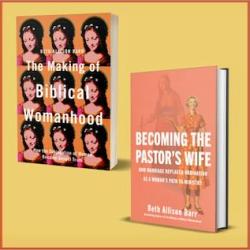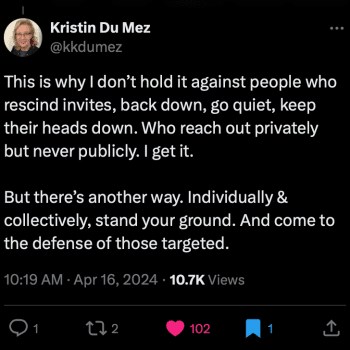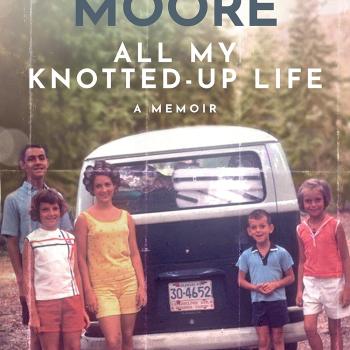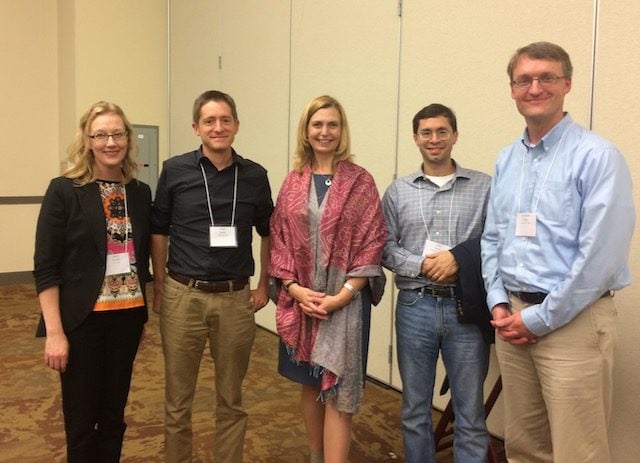
It was July 2014. My colleague Tommy Kidd and I were walking across Baylor campus (honestly, I don’t remember why). He was an Associate Professor and I had just received my promotion letter upgrading me to an Associate Professor, too. I have a piece, I told Tommy, on writing as a female academic with small children. Would he be interested in running it on his religious history blog site? (For those of you new to the Anxious Bench, Tommy Kidd served as editor before Chris Gehrz). Yes, he said. Send it to me! I did, and on August 14, 2014, my first ever piece of public scholarship appeared on the Anxious Bench (yeah–I really used to run 5 miles a day then…).
About a year later, Tommy and I were again discussing the Anxious Bench–but this time he asked the question. Would I be interested in joining as a regular collaborator? I think I thought about it for two seconds. Yes, I said. I would love too!
And I meant it.
You see, I had intended to be a journalist. I edited the newspaper at my high school and won second in State for UIL Feature Writing my senior year. But the first college class I took at Baylor converted me to History. (I guess you can ultimately thank Rufus Spain for me writing The Making of Biblical Womanhood as he convinced me to be a History major). I still wanted to tell stories, but I decided a better understanding of the past would help me write better in the present. Three years later I had been converted to the historical profession. Instead of submitting job applications to The Dallas Morning News I was submitting applications to graduate school.
Seven years after I graduated from Baylor with a BA in History I was graduating from the University of North Carolina at Chapel Hill with a PhD in Medieval History. Fifteen years after I placed second in State for Feature Writing I was publishing my first academic monograph, The Pastoral Care of Women in Late Medieval England. Six years after that, I was a tenured History professor at Baylor.
But I missed Feature writing.
I missed writing punchy headlines. I missed writing sentences that non-academics could understand. I missed writing pieces that ordinary people wanted to read. Indeed, in 2014 I was still going through what I call my “bad-title-phase” (just go look at some of my academic articles–sigh). The publish-or-perish rule of academia had ruled my life since 2006. I had not only forgotten how to write well, I had forgotten why I loved writing.
The opportunity to write on a public history blog where I could combine my academic skills with my Feature writing voice was a dream come true. I felt free. I published my first blog as a regular contributor on October 7, 2015. Would you believe it was comparing a medieval woman to Donald Trump? It was. I don’t think many people read that first post, but I am proud of it. And those of you who have read The Making of Biblical Womanhood will recognize the story of St. Margaret and the dragon.
About two weeks later I ran across a Pew report gauging evangelical attitudes towards Halloween. It irritated me so much that I stayed up all night writing a new post–“Halloween: More Christian than Pagan.” I sent it to Tommy and he ran it on October 31, 2015. I think it may be the most popular piece I ever wrote for the Anxious Bench. In 2016 it was picked up by the Washington Post and, by 2020, had made its way into an online bible study site.
Needless to say, I loved being a regular contributor on the Anxious Bench. The interest in my Halloween post gave me the idea to write about medieval origins of modern practices. I published “Xmas is Really Xpian” (also one of my favorites!) and “1647: The Year Christians Cancelled Christmas” in December 2015. I published a few posts related to Easter and Christmas, but Halloween continued to be my favorite holiday to write about. I published “The Modern Roots of Halloween” in 2016 but began expanding out to witchcraft and ghost stories. (In fact, I was finishing “Burning Witches in Medieval Europe” when we found out that my husband was fired.) I honestly thought that exposing modern misconceptions about medieval Christianity might be my primary blog theme.
But, by December 2016, everything had changed.
Three significant events happened in my Anxious Bench life in 2016. First, Tommy Kidd resigned as editor and we asked Chris Gehrz to take his place. I didn’t know Chris well at the time, but he was soon to become a good friend and one of the best decisions I helped make on the Anxious Bench. Chris served as the editor for most of my time at the Anxious Bench. He left in 2022, leaving it in the fantastic hands of Joey Cochran, but you can still follow his writing on substack.
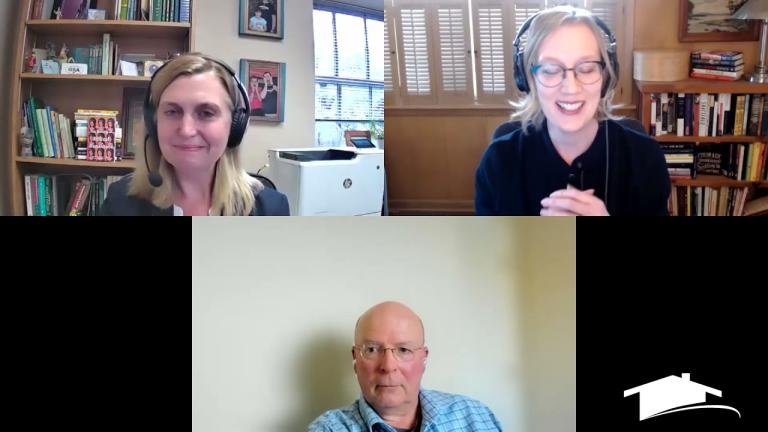
Second, I asked Kristin DuMez to join the Anxious Bench in 2016. For those of you not in the know, I met Kristin in 2013 when I invited her to present on her first book at a conference I organized for the Institute for the Study of Religion at Baylor. We both begin attending the Conference on Faith and History (again–both of us gave it a second shot; one day we can tell more of this story) which continued our friendship. I will never forget her Anxious Bench debut, “Donald Trump and Hillary Clinton: By Their Words.” It gave us a small taste of the power of her scholarship, which we have all now seen with Jesus and John Wayne. For five years Kristin and I wrote side-by-side, with her monthly Thursday post following my bi-monthly Wednesday post. We joked about being the one-two punch long before we had any inkling of writing Jesus and John Wayne and The Making of Biblical Womanhood. Funny how life turns out! (and if you want to see the most recent public appearance of Kristin and me together, ten years after that 2013 symposium, here it is)
Third, my husband was fired from his job in youth ministry about two months before Donald Trump was elected to the presidency of the United States. The Anxious Bench gave me a place where I could both process the trauma in my own life as well as begin to think about how my story fit in the larger narrative of white evangelical Christianity. You can actually see my frustrations with what was happening at church in blogs such as “Of Pastors and Power: Mark Driscoll and the Avignon Papacy” (August 2016) and “When Churches Fail” (November 2016).
But it wasn’t until December 2016 that I began to really start speaking out. I tell about the moment in the introduction to The Making of Biblical Womanhood. I left church on Sunday morning, drove home, and started writing. Contrary to what folk like Kevin DeYoung and Brad Green seem to have thought, I didn’t start writing The Making of Biblical Womanhood. I had no thought of writing a book at that time (it wasn’t until December 2018 and Spring 2019 that I really began to consider it). I was writing an Anxious Bench post–“The Peace of Christmas during the Pain of Life.” I late published this as “The Christmas Beginning of The Making of Biblical Womanhood.”
Indeed, after December 2016, you can follow the trajectory of my posts building toward what would eventually lead to The Making of Biblical Womanhood. I started questioning evangelical politics and complementarian theology in 2017, including “No Room for a Female President in Wayne Grudem’s World,” to “Evangelical Silence and Trump: A Reformation Irony,” to “Should Women Rule” Netflix’s The Crown and Complementarian Theology.” In 2018 I started following the progress of Beth Moore. This was really a turning point for me as I began to realize how much the voices of women could help change the trajectory of evangelical Christianity. My mom first drew my attention to how Beth Moore was speaking out in March 2018. I remember reading her tweets and just sitting in shock. Maybe, maybe we could change this, I thought. I wrote “Will Beth Moore Help Save Evangelicalism” with more hope than I had felt in a long time. I followed it the next month with my first post to make the front page of Patheos, “A New Hope for Evangelical Women.” I cannot tell you how much hope Beth Moore gave me then and continues to give me now. I featured her in at least two more blogposts, “Let Me Be a Woman, Revised: Elisabeth Elliot and Beth Moore” and “Who Defines Preaching Anyway?,” and wrote an oped that appeared in the Dallas Morning News. Finally, in 2019, I started a series on rethinking Paul and disrupting Christian Patriarchy. As you might imagine, both of these series fed directly into me deciding to write The Making of Biblical Womanhood. I originally titled it “The Myth of Biblical Womanhood” as I had titled an Anxious Bench Post, but my editor Katelyn Beaty suggested we change myth to making (which was an excellent call). When I finally did decide to write a book (I signed the contract in August 2019), I chose the Anxious Bench to release my introduction one month before the official book release. (You can read more about my decision to write the book and the aftermath in my postscript, “The Quiet Reformation: How The Making of Biblical Womanhood is Setting Women Free.”)
Of course, I have written about much more during my eight years on the Anxious Bench. Many of my posts deal with the reality of graduate school–my most read of these is probably, “The Value of Failure in Graduate School.” I have written about racism, including my complicity as a white woman. My favorite of these was about the erasure of a cemetery in Waco, “When History Was Really Cancelled.” I think my three favorite posts of all time, not mentioned yet, are my post on Dorothy Scarborough (an early twentieth century professor at Baylor who wrote one of the most haunting ghost stories I have ever read), my post on my grandfather (“The Death and Historical Afterlife of a WWII Soldier,”) and my post on the burning of Notre Dame which ended up in Religion News Service.
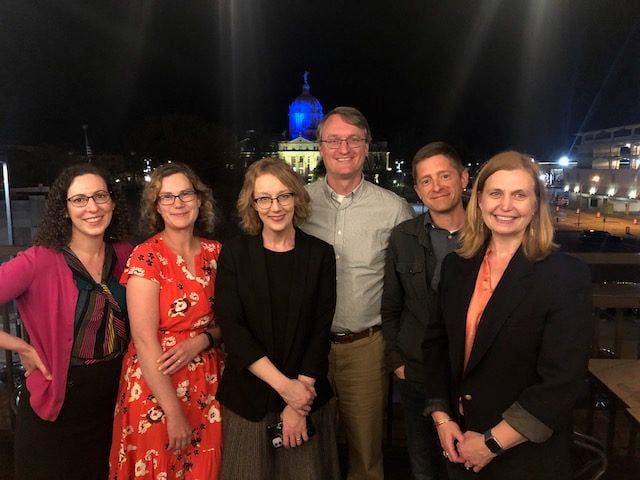
When I think about the pieces of my academic career that led me to write The Making of Biblical Womanhood, the Anxious Bench plays a pivotal role. I learned to write for a public audience on this blog. I met some of my now closest writing friends. And I learned that my voice could make a difference.
Today is my final post as a regular contributor on the Anxious Bench. It is hard to walk away from a place that has meant so much to me. But I also know that, by walking away, I am making room for future voices who need to be heard too. I can’t wait to see what the next chapter of the Anxious Bench will hold.
Godspeed, y’all!
Beth Allison Barr
(and you can find me on substack: Marginalia with Beth Allison Barr ; I didn’t get to talk about half of my favorite AB posts here, so I will follow up with a post on substack)





